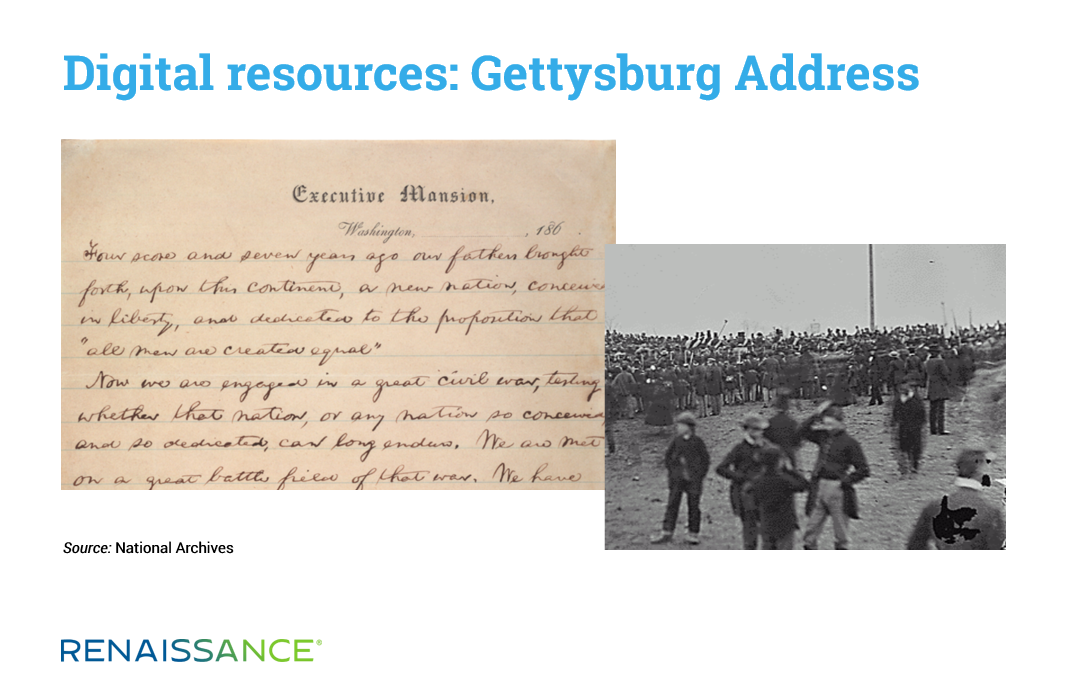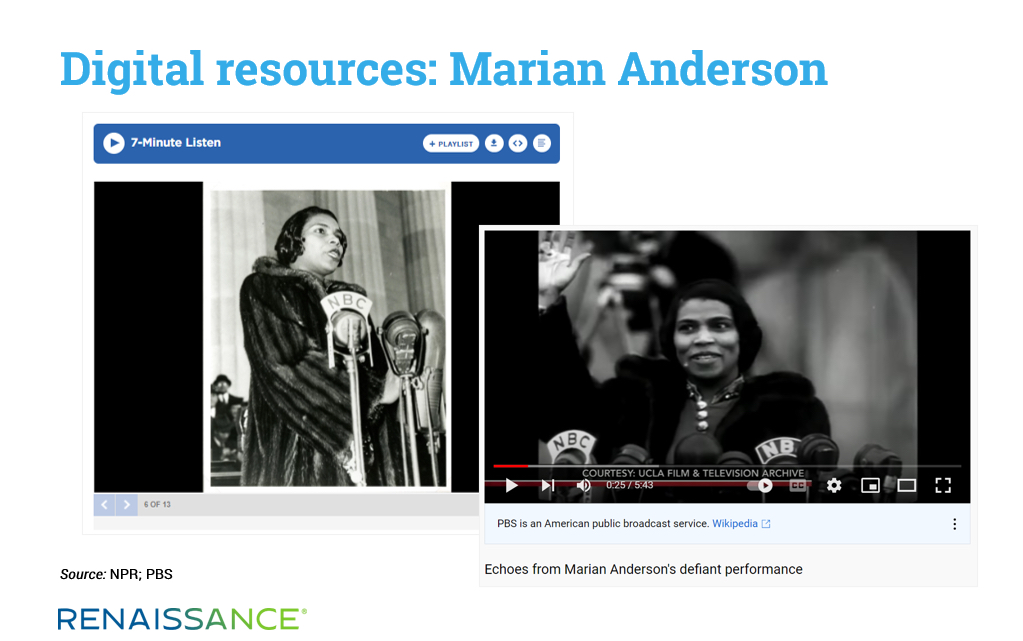November 20, 2020
Several years ago, the Norwegian Broadcasting Corporation provided an entertaining look at how we adjust to new technologies. Their short video, titled The Medieval Helpdesk, shows an adult reader struggling to read from a book rather than from the scrolls he’s familiar with. Technical support has to be called in to show him how to open the book, turn the pages, etc. With instruction, modeling, and practice, he eventually masters the new format and can refocus on his reading.
Several centuries later, we do much the same thing as we guide emergent readers to an understanding of books. We lead them to print awareness, because when you don’t know how a book works (e.g., how to open the cover or turn the pages), reading is a struggle. But, today, most books come in two formats, print and digital, and when you don’t know how digital reading works, deep reading can be at risk.
Cognitive scientist Daniel Willingham explains that the core of reading—decoding images to create meaning—remains constant whether we read printed texts or digital ones. However, while the mechanics of reading do not change, some of our habits of reading can change to accommodate differences between print and digital. And this, in turn, can impact comprehension. But with support for readers to develop strong digital reading habits, the impact on comprehension is actually positive. Let’s explore this point.
Reading habits in digital environments
Printed books, newspapers, and magazines are tactile, three-dimensional objects. The tactile nature of reading printed texts can leave an impression, a physical memory. We tend to remember where within the text we read a specific quote, studied a graph, or were intrigued by an illustration: toward the front, on the left-hand page, close to the bottom, etc. (Willingham, 2017).
In further engagements with print—typically with one text at a time—we physically add and remove sticky notes to mark key passages. We add (but cannot remove) highlights. We write in the margins, or we ask the author to sign the title page. Some readers, with some texts, set aside a time and perhaps a physical space for reading. This makes sense because readers go to books. Reading print creates a cognitive and physical connection between reader and text.
Reading digitally establishes the same cognitive connection but with one major advantage: access. Reading digitally no longer requires that we go to the books. Instead, thousands of books can easily travel with us. Digital platforms, such as myON, allow access to multiple texts on a single device with built-in engagement tools that adapt habits of reading print—journaling, note taking, highlighting, and sharing comments with peers—to the digital space. While some educators may be concerned that engagement tools may distract readers and increase cognitive load, even emergent readers learn to navigate digital books, especially when engagement tools are available. They also learn remarkably well on their own, with no significant differences in comprehension (Swanson et al., 2020; Zipke, 2017).
Reading online, as opposed to reading on a digital platform, can create different habits of reading. When you need to know a specific piece of information (e.g., the opening time of a public park, or the year in which some historical event occurred), it’s reasonable to open your browser and scan a website for the information you need. It’s called word spotting, which in this case is useful and efficient. However, when reading deeply to understand a moment in history, analyze an argument, or build knowledge from multiple texts, word spotting misses the mark. Deep, reflective digital reading is required, and that is built through explicit instruction, modeling, and practice—not in how a digital book or website works, but rather through awareness of how the reader works in a digital space.
The key role of digital awareness
Digital awareness reframes the discussion to focus more intently on powerful instruction and meaningful content. In our new book Literacy Reframed, my coauthors and I identify four elements of digital awareness: the perception of reading digitally, the purpose for reading, the product of (or response to) reading, and an effective pace for reading. Digital awareness prepares learners and teachers to thrive in both the world of print and the universe of digital text.
1. Perception of digital reading
These days, there is concern about young children’s screen time and its impact on language and literacy development—with good reason. Unattended screen time is negatively correlated to children’s language and literacy development. However, screen time accompanied by “human interactive time [is actually] a critical component of literacy development” (Hutton et al., 2019).
Likewise, teacher-student and peer-to-peer interactive time throughout school remain critical components of continued language and literacy development. When engaged in digital reading at school, the purpose for reading, depth of vocabulary, knowledge about the text, collaboration with peers, and responding to reading play far more significant roles in student success than paper or platform (Singer & Alexander, 2017; Sullivan & Puntambekar, 2015). In other words, whether print or digital, it’s all about reading. To echo Willingham (2017), the cognitive processes of reading do not change, and neither do the best practices that guide students to deep and engaged reading.
2. Purpose for reading
Comprehension differences among students reading digital texts appear to be more strongly connected to goal-directed reading and word count. Once again, human interactive time is critical to student success. In this case, the interactive time would be focused on the purpose for reading and why either digital or print texts better serve that purpose.
For example, if the purpose for reading is to memorize Lincoln’s Gettysburg Address, students should get a printed copy. However, if the purpose is to analyze Lincoln’s word choice and his rationale for referencing the Declaration of Independence rather than the US Constitution in the address, then access to multiple online texts—including historical archives—is required. Learners might review Lincoln’s handwritten copy of the address or the first photo discovered of Lincoln at Gettysburg. Accessing these archives can bring history closer to the learner. A realistic perception of place and a clear purpose for reading sets the stage for deep reading, no matter the environment.

3. Product of reading
The product of reading is simply the reader’s response to it. With students in the primary grades, products of digital reading often focus on language development, word recognition, and comprehension (Zipke, 2017). In the middle and upper grades, traditional response-to-reading strategies easily transfer from print to digital. For example:
- “Headings and highlights” focuses on deep reading, collaboration, and creative writing (Schwartz, 2016). Students work in partnership, identifying key ideas with highlights and summarizing text or a moment in time with four-word headlines. Partners can work remotely with online annotation tools or within a digital platform like myON, which supports teacher-created Projects that include both individual and collaborative tasks.Sample activity: With our nation involved in difficult conversations about racism, students at all grade levels, with developmentally appropriate guidance, might research a significant moment in history and apply its impact to their lives today. Students might, for example, start by watching a PBS news story about Marian Anderson’s concert at the Lincoln Memorial in 1939. Students then “work backwards” to explore why the event was moved to this location. Access to firsthand accounts and to Anderson’s performance, including her purposeful change to the “My Country ‘Tis of Thee” lyrics, speak volumes. To share this in a four-word headline requires extensive collaboration and conversation among students.
- “Worth a thousand words” focuses on images in the digital space (Hochman & Wexler, 2017). Following digital reading, students work with a partner to identify, or create, an image central to the meaning of the text. The partners then design a question inspired by both the image and the text. Students pose their questions to peers (with teacher guidance) and engage in text-based discussions about the images.Sample activity: This technique works with both the Lincoln and Anderson examples. In the case of the Gettysburg Address, the image of Lincoln would ignite meaningful conversation. For Anderson’s concert, consider replacing an image with the audio of Anderson to generate meaningful conversation and rich, text-based questions.Emergent readers can also easily engage in this technique in order to share what they learn through digital reading. For example, Bear Says Thank You (ATOS 0.8), which is available digitally on myON, is rich in meaning and imagery. Children can select an image from the book and lead a thoughtful, text-based discussion with peers.

4. Pace of reading
Students typically read faster with digital texts than with printed texts. Not surprisingly, students who read faster retain less of what they read. This is complicated by the fact that students who read quickly often think they are doing better because they equate speed with competence (Singer & Alexander, 2017). Because students are unlikely to slow down on their own, it’s up to teachers to consider pace and guide students appropriately.
Interestingly, there is little, if any, significant difference in comprehension when students work with digital texts that are 500–800 words long (Singer & Alexander, 2017). I suggest sharing this information with students and following up with opportunities for them to practice reading, and rereading, brief digital texts. When reading digitally for academic purposes, stronger comprehension gains are often the result of having engaged more deeply with shorter texts that are read slowly and deliberately. Let students know about this finding as well.
Thriving in a digital world
Whether it’s feared or revered, digital reading is now firmly established alongside traditional print texts at home, in the workplace, and at school—particularly in the era of COVID-19. Wisely, we continue to monitor digital reading’s impact on language and literacy development and insist on identifying evidence-based best practices for reading instruction. After reviewing the evidence, we find that human interactive time and engagement with rich digital content support students’ language and literacy development.
Even in our modern world of smart devices and LED lights, traditional technologies are ubiquitous. We still buy paper, pencils, and candles. We still send handwritten cards through the mail. Although digital texts are often less expensive, we, at times, prefer the “feel of a book or a physical newspaper to swiping a screen” (Harford, 2017). We read aloud, often while alone, just to say the words. With deliberate attention to digital awareness, our learners can continue to thrive in the world of print and in the universe of digital text.
References
Harford, T. (2017). How the invention of paper changed the world. Retrieved from: http://www.bbc.com/news/the-reporters-38892687
Hochman, J. & Wexler, N. (2017). The writing revolution: A guide to advancing thinking through writing in all subject areas. San Francisco: Jossey-Bass.
Hutton, J., Dudley, J., Horowitz-Kraus, T., DeWitt, T., & Holland, S. (2019). Associations between screen-based media use and brain white matter integrity in preschool aged children. Retrieved from: https://jamanetwork.com/journals/jamapediatrics/fullarticle/2754101
Schwatrz, K. (2016). Strategies to help students go deep when reading digitally. Retrieved from https://www.kqed.org/mindshift/46426/strategies-to-help-students-go-deep-when-reading-digitally
Singer, L., & Alexander, P. (2017). Reading on paper and digitally: What the past decades of empirical research reveal. Review of Educational Research, 87(6), 1007–1041.
Sullivan, S., & Puntambekar, S. (2015). Learning with digital texts: Exploring the impact of prior domain knowledge and reading comprehension ability on navigation and learning outcomes. Computers in Human Behavior, 50, 299–313.
Swanson, E., Austin, C., Stewart, A., & Scammacca, N. (2020). A meta-analysis examining the effect of e-book use on literacy outcomes for students in grades K–12. Reading & Writing Quarterly, 36:5, 480–496.
Willingham, D. (2017). The reading mind: A cognitive approach to understanding how the mind reads. San Francisco: Jossey-Bass.
Zipke, M. (2017). Preschoolers explore interactive storybook apps: The effect on word recognition and story comprehension. Education and Information Technologies, 22(4), 1695–1712.
Learn more
Read our second blog for more insights on reframing student literacy. And to see everything that the myON digital reading platform has to offer, click the button below.


